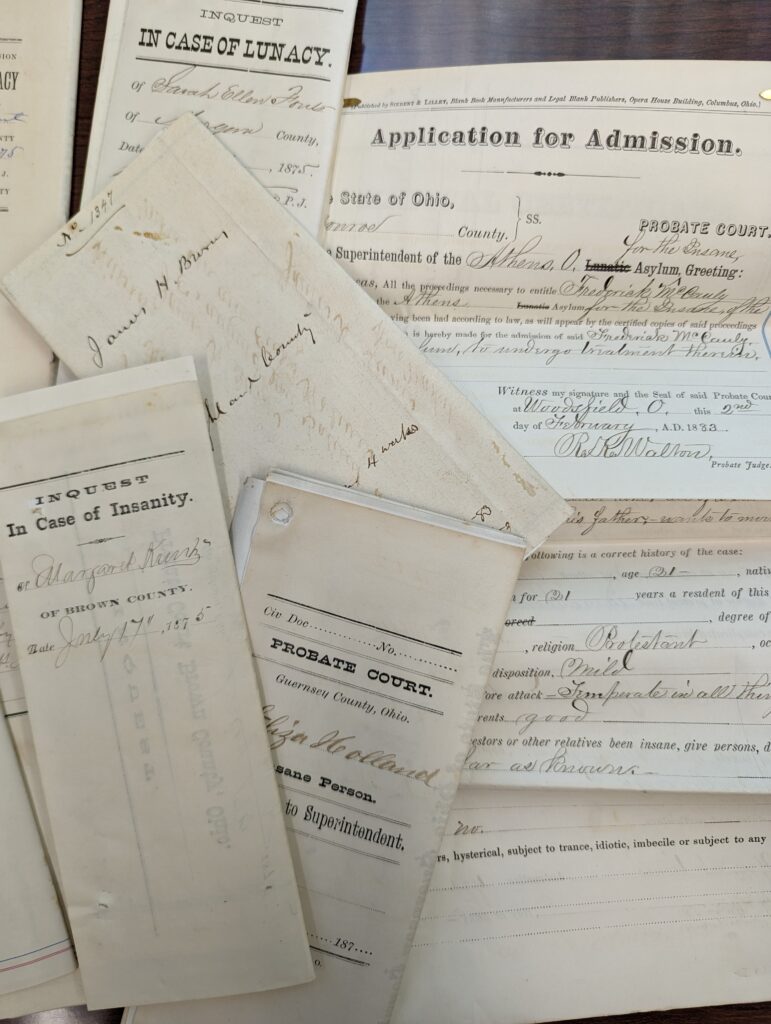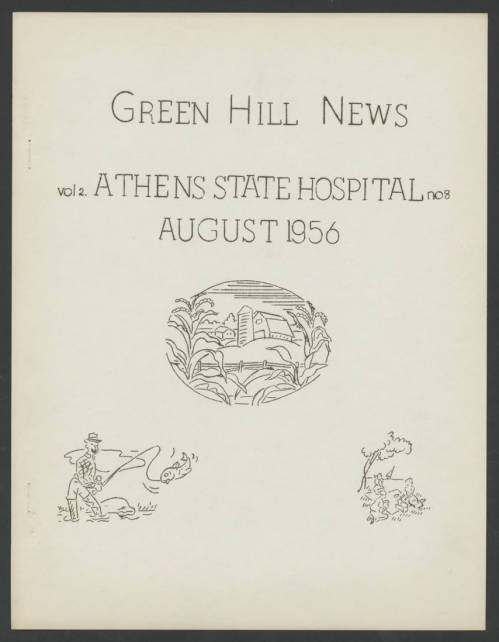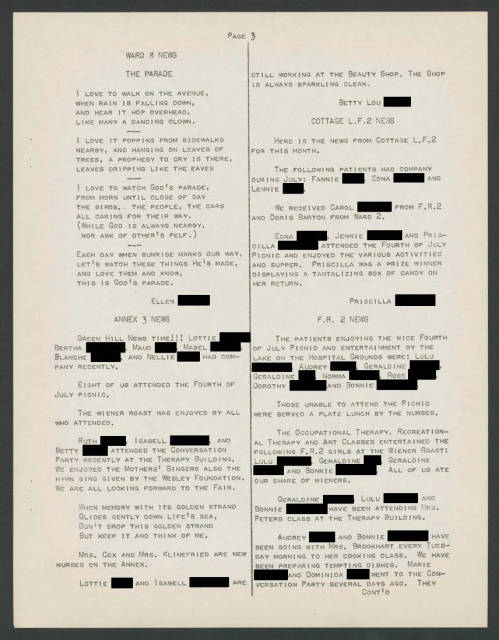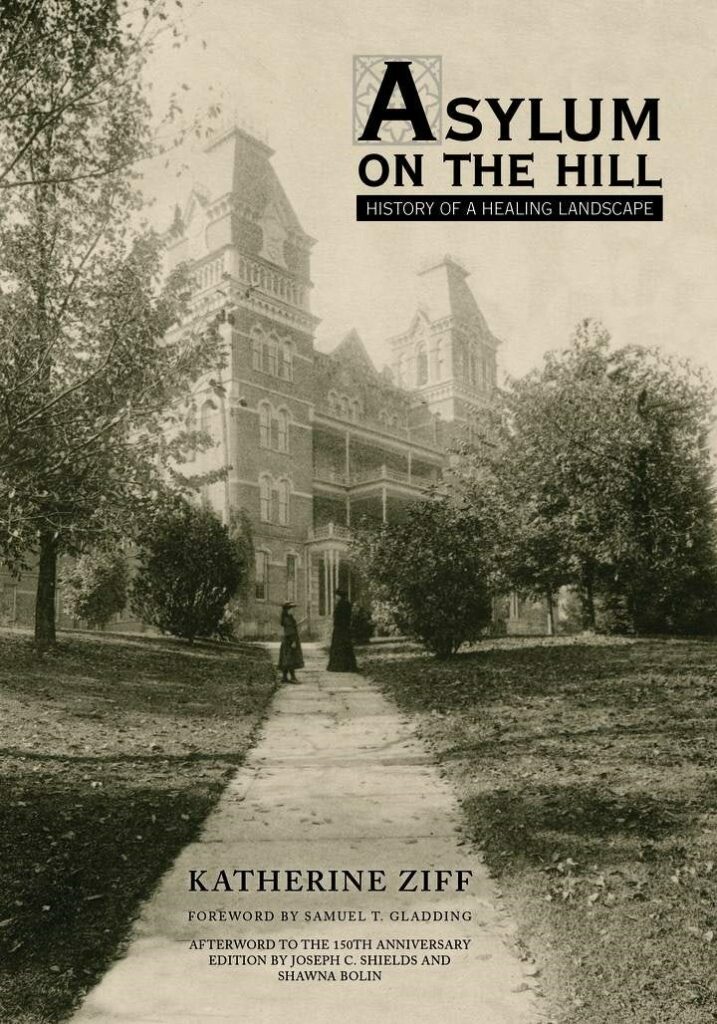By Julian Earley, BA ’26 Classical Civilizations, Digital Initiatives Assistant
Everyone loves a good haunting. I too have been interested in ghost-hunting and wanted to know what lies in the Asylum here in Athens. But I think it’s important when we talk about the history of institutions like The Athens Mental Health Center to humanize the people who lived there. They were real people, with complex lives and conditions, and should be treated as such. I hope we can think of these people as more than scary ghosts and reflect on them as fellow humans.

I have been working with inquests – packets of patient information from court records that include names, counties patients are from, and why they are being admitted – from the Athens Mental Health Center records since I began working in Digital Initiatives in Fall 2023. Immediately, they fascinated me; the stories of patients long forgotten, the complexities of mental health and family lives, and the lives of those living with mental illness and disabilities.
After this, I started doing my own work in researching the asylum. Much of the work addressing the asylum focused on the medical staff, and I wanted to know more about the patients. As someone who dealt with my own bout of madness in 2023, following the beginning of my work in the archives, I felt a strong connection to the patients of the Athens Mental Health Center. My fascination grew. Had I lived 200 years earlier, even 60 years earlier than I do, I could have been put in an institution like the Athens Mental Health Center for the rest of my life.
I returned to Digital Initiatives in 2024 and I was chosen as an OhioLINK Luminaries library intern the same year. I knew I wanted to focus on The Athens Asylum in both of my jobs. I wanted people to know that these people were not something to be afraid of, not specters to hide away from, but multifaceted humans with inner lives and sicknesses that, until psychotropic medication was invented in the 60’s, were often hidden away in asylums from the public for the remainder of their lives.
The Athens Asylum helped the patients in some ways and harmed them in others. They focused on group therapy but were also the last institution in America to perform the lobotomy. Other types of therapy were hydrotherapy, electroshock, and art therapy. There are also rumors of abuse by staff that can’t be confirmed or denied. The patients also worked on the farm and in the dairy located at The Athens Mental Health Center. It was believed this would help with their healing process but also exploited the free labor from the patients.
So, who were the people who lived in the Athens Asylum? The truth is, like all people, they were a variety of people with different stories and different reasons for being placed there. The inquests in the Mahn Center Archives can tell you a little bit about the patients conditions and little bits about their family lives. Another way to learn about patients is through the Green Hill News patient newsletters, which tell all about patient life and the activities that took place there. The patients discuss who visited whom, what was on patients’ minds, and about whatever holiday was being most recently celebrated. On top of this, patients share poetry and recent news.


One popular legend in Athens, is the tragic death of a patient. It is said she died of a heart attack and her body wasn’t discovered for 42 days. Her body left a stain that is still there to this day. But she should be known for more than this, for more than the stain her body left behind. A former Athens Asylum worker talks about seeing this patient smoking a cigarette and talking about her beautiful kids. She was a mother and from the sound of it a kind person; in the film The Athens Asylum, he recalls that she doesn’t seem like the type of person to haunt anyone.

Another resource about the patients lives is Katherine Ziff’s book Asylum on The Hill. There is a chapter on The Patients, and some of their stories; the first was a teenage girl with epilepsy. Throughout the years, many disabled patients were housed there simply because the system didn’t know what else to do with them and, like the mentally ill, they were viewed as “untouchables”.
Finally, the Naming The Numbered Project is a great way to learn about the lives of the people who lived in the asylum. This project tells us about the people buried in numbered graves on the grounds of The Athens Mental Health Center. It tells about who they are and where they’re from.
I wish we knew more about the individual patients of the Athens Asylum, more than their conditions and the little tidbits we find in these resources, but there is power in these stories, in viewing mentally ill people as full, nuanced humans.
So is the Athens Mental Health Center haunted? It’s no more likely than any other hospital, any other institution that built a business by exploiting marginalized people. But I hope we can use the Athens Asylum to learn what helped these patients and what harmed them, and what mistakes not to make in the future.